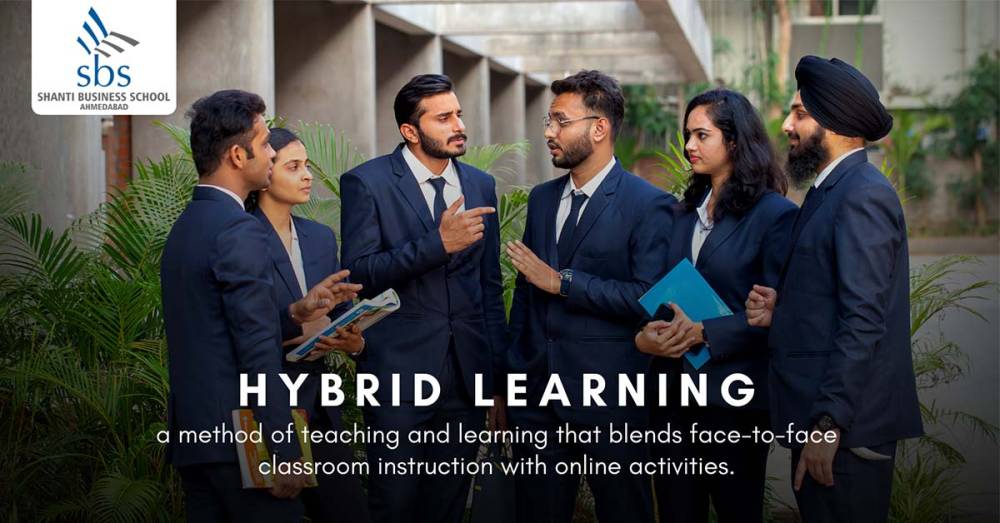Hybrid Learning


The epidemic compelled educational institutions and instructors to experiment with ‘online’ education as a delivery method.
The term “hybrid learning” refers to a method of teaching and learning that blends face-to-face classroom instruction with online activities.
This type of education assists students in progressively transitioning to a self-directed learning style.
The notion of blended learning or a ‘hybrid’ model of learning has been around for a decade, but it has gotten a lot of attention in the last few months as a result of the unprecedented global catastrophe caused by the epidemic. It would have seemed far-fetched a year ago if someone had stated that all learning in the next months will take place online and that students (and professors) would not be coming to classrooms at all.
Covid-19 accomplished the impossible. It forced educational institutions and instructors to experiment with ‘online’ education from as a delivery method. There was a lot of learning going on during the process. Different models of online learning were tried and assessed, and the techniques that appeared to be the most effective were chosen. One such method is hybrid learning.
What exactly is hybrid learning?
Hybrid learning is a teaching and learning strategy that mixes in-person classroom instruction with online activities. Although the terms ‘hybrid learning’ and ‘blended learning’ are frequently used interchangeably (including in the opening paragraph of this article), there is a slight but significant distinction between the two. In a blended learning setting, online learning is intended to supplement in-person classroom learning by providing extra resources such as videos, articles, and so on to provide an enriched learning experience. Online learning is intended to replace a component of the in-person class in a hybrid learning environment. The online content is intended to provide flexibility to the learning experience as an alternative to in-person material.
Benefits of Hybrid Learning
To be genuinely productive, the hybrid learning environment requires a carefully developed curriculum that employs a different set of tactics than those used in a traditional classroom. All forms of teaching and learning, including in-person, online, and hybrid learning, have the opportunity to flourish in the future. However, it is impossible to deny that hybrid learning is set to increase tremendously. Hybrid learning effectively combines the benefits of personalization and convenience to provide a learning environment that is best adapted to meet the changing demands of students today.
Personalized Learning: The hybrid approach to learning allows each student to study at their own speed, resulting in increased retention. Students may engage in a range of synchronous and asynchronous learning activities that are tailored to their learning styles, allowing them to develop a more comprehensive grasp of the subject matter. Because of the smaller size of the group, teacher-student interactions may be considerably more individualized and successful.
Increased flexibility: A hybrid method allows students discretion over the time, location, and speed of their learning. This adaptability frequently leads to higher attendance and involvement in classes.
Sophisticated assessments and reporting: The Hybrid learning model’s use of technology allows for comprehensive student evaluations, peer benchmarking, and detailed reporting.
Customized tests, participation in live lectures, and live conversations with lecturers are all examples of methods to provide students with rapid feedback that is extremely beneficial to their learning.
Use of technology to expand the breadth of personalization and engagement: The use of Artificial Intelligence will help to tailor learning to fit diverse learning styles, resulting in improved learning results.
Technology may assist make the hybrid learning environment more efficient in a variety of ways, including gamification, self-paced learning, and short movies with interleaved activities.
Hybrid education is here to stay. It is our responsibility as educational technologists to create learning environments that incorporate the finest of both in-person and online learning settings.